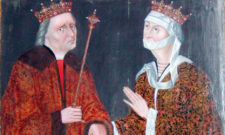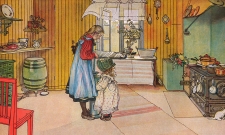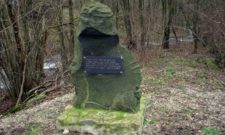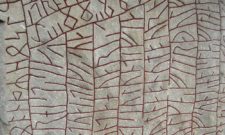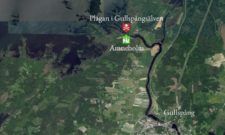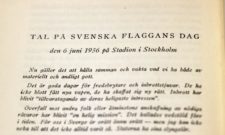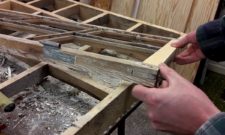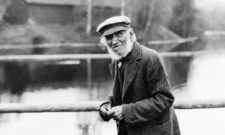Sägner
Bridge over Kalmarsund

Apr
A tale from Herman Hofberg's Swedish folk tales from 1882 about two giant queens and the building of a bridge between Småland and Öland.
North of the village Wi in Källa parish is a larger stone, called Sekiel's stone after a giantess Sekiel, who is said to have lived at Borgehaga in Högo parish.
The same giantess had a sister, who was married to a giant Skägge and lived in Ryssby parish on the Smålands side. In order to meet more often, the giant sisters agreed to build a stone bridge across Kalmarsund, one from Ryssby shore and the other from Öland.
The giant from Småland began his work first. Every day she came with large catches of stone and filled the lake, so that at last she had finished the bronze landing-place, the so-called Skägganäs, which extends a quarter of a mile into the sea. The giantess on Öland was also about to start building, but when she came with the first stone in her apron, she was shot through the life by a servant with a spoon. Overwhelmed by torment, she sat down to rest on the aforementioned Sekiel's stone, which has a shallow depression in the top, which depression is said to be a memorial of this rest.
When she had rested, she began her walk again, but did not get further than Persnäs, when the thunder began and lightning struck her dead. As soon as she fell, she let the stones out of her apron, and they are still there in the great tubs on the hills of Persnäs.
Subscribe to YouTube:
If you appreciate Allmogens independent work to portray our fine Swedish history and Nordic culture, you are welcome to buy something nice in the shop or support us with a voluntary donation. Thank you in advance!
Support Allmogens via Swish: 123 258 97 29
Support Allmogens by becoming a member
Support Allmogens in your will
Historical maps of Öland
Our wall maps are carefully restored, centuries-old maps that are reprinted in Ångermanland on matte, age-resistant, museum-quality premium paper. 1% of the proceeds go directly back to cultural heritage!
